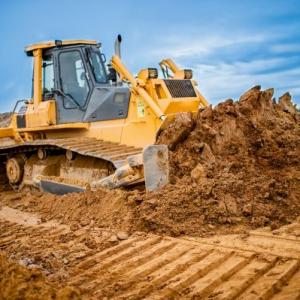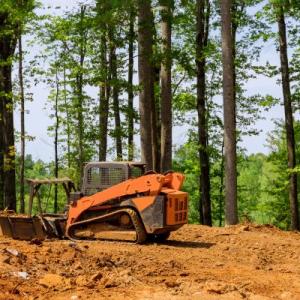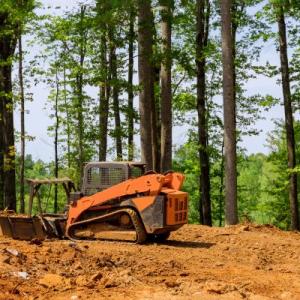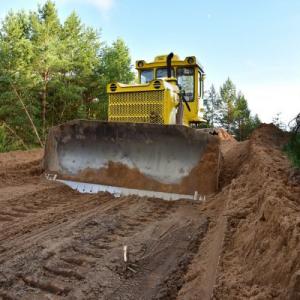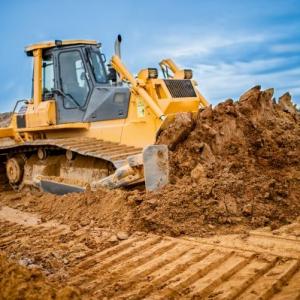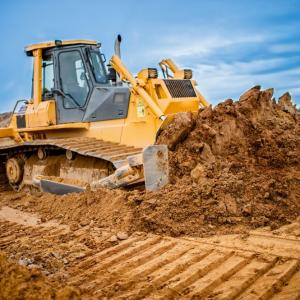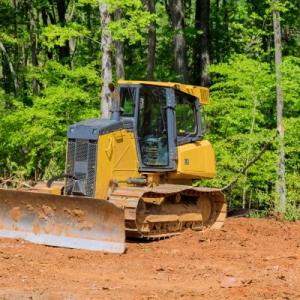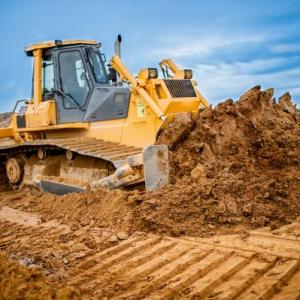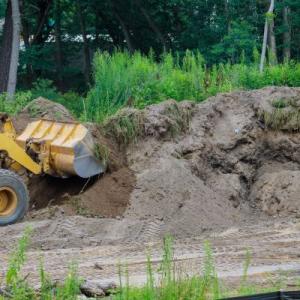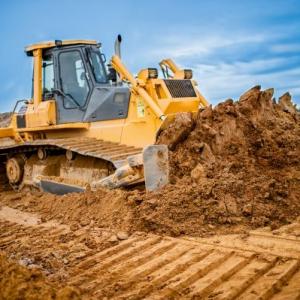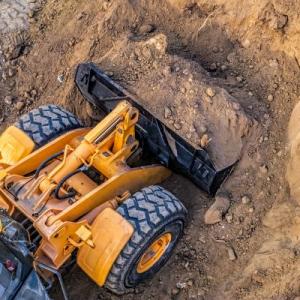Landscape Recontouring: Greeley
Landscape Recontouring in Greeley
Get help with Landscape Recontouring in Greeley. Fill out the form above and we will connect you with local Greeley pros. Landscape recontouring offers numerous advantages for homeowners looking to enhance the aesthetic appeal and functionality of their outdoor spaces. This transformative process allows for the reshaping and leveling of uneven terrain, resulting in a more visually appealing and harmonious landscape. By addressing issues such as sloping or uneven ground, landscape recontouring creates a more balanced and inviting environment for outdoor activities and gatherings. Additionally, this service can help improve drainage and prevent water pooling, reducing the risk of erosion and potential damage to property. With landscape recontouring, homeowners have the opportunity to create a more enjoyable and visually pleasing outdoor space that suits their needs and preferences.Land Grading
Land grading is a process that involves reshaping the ground to achieve a level and smooth surface. It offers several practical benefits for property owners. Firstly, land grading helps to improve drainage by ensuring that water flows away from the property, preventing issues such as flooding and water damage. It also helps to control erosion by reducing the risk of soil runoff. Additionally, land grading provides a stable foundation for construction projects, ensuring that buildings and structures are built on a solid and even surface. Moreover, it can enhance the aesthetic appeal of a property by creating a visually pleasing and well-maintained landscape. Overall, land grading is a crucial step in land development that promotes functionality, safety, and the long-term value of the property.Earthmoving
Earthmoving is an essential service that involves the use of heavy machinery to excavate, move, and shape the earth's surface. This process is commonly used in construction, mining, and landscaping projects. One of the main benefits of earthmoving is its ability to efficiently and effectively complete large-scale projects. By utilizing specialized equipment, such as bulldozers, excavators, and loaders, earthmoving allows for the rapid removal of soil, rocks, and debris. This not only saves time but also reduces manual labor and associated costs. Additionally, earthmoving enables precise grading and leveling of the land, ensuring a solid foundation for buildings and infrastructure. Overall, earthmoving plays a crucial role in enhancing productivity, improving site safety, and facilitating the successful completion of various construction and development endeavors.Topographical Changes
Topographical changes refer to the alteration or modification of the physical features and characteristics of a given area or landscape. This process involves surveying and mapping the existing terrain, including natural features such as hills, valleys, rivers, and man-made structures like buildings and roads. By obtaining topographical changes, individuals or organizations can gain valuable insights into the land's contours, elevations, and slopes. This information is crucial for a range of purposes, including urban planning, construction projects, environmental assessments, and land development. Understanding the topography of an area allows for better decision-making, ensuring that developments are designed and implemented in a manner that is both efficient and sustainable.Terrain Reshaping
Terrain reshaping is a process that involves altering the natural features of a landscape to create a more functional and aesthetically pleasing environment. By reshaping the terrain, property owners can address issues such as poor drainage, uneven surfaces, or limited usable space. This transformative technique allows for the creation of leveled areas, terraces, or slopes, which can be tailored to specific needs. Additionally, terrain reshaping can enhance the overall appearance of a property, increasing its visual appeal and potentially adding value. Whether it's improving water flow, optimizing space utilization, or enhancing the overall landscape design, terrain reshaping offers a practical solution for property owners seeking to optimize their outdoor spaces.Slope Modification
Slope modification is a professional service that offers effective solutions for uneven or sloping terrain. By addressing the natural gradient of the land, slope modification helps to prevent erosion, stabilize soil, and minimize the risk of landslides. This process involves various techniques such as terracing, regrading, and retaining walls, which are designed to create a more level and stable surface. With slope modification, property owners can enhance the usability and safety of their land, allowing for better landscaping, construction, and overall enjoyment of the space.Ground Leveling
Ground leveling is a process that involves the adjustment of uneven or sloping surfaces to create a level foundation. This technique is commonly used in construction and landscaping projects. By addressing uneven ground, it ensures stability and prevents potential structural issues in the long run. Ground leveling also helps to improve drainage and prevent water pooling, which can lead to soil erosion and damage to structures. Additionally, a level surface provides a safer environment for walking, reduces tripping hazards, and allows for easier installation of various outdoor features such as patios, decks, and driveways. Overall, ground leveling is an essential step in creating a solid and functional foundation for both residential and commercial properties.Landscape Recontouring FAQ
Q: How Long Does The Process Of Landscape Recontouring Typically Take?
Answer: The duration of the landscape recontouring process can vary depending on the size and complexity of the project. However, it typically takes anywhere from a few days to several weeks to complete.Q: What Are Some Common Challenges Or Obstacles That May Arise During Landscape Recontouring?
Answer: Some common challenges or obstacles that may arise during landscape recontouring include: 1. Soil erosion: When reshaping the land, there is a risk of soil erosion, especially on steep slopes or areas with poor drainage. Proper erosion control measures need to be implemented to prevent soil loss. 2. Drainage issues: Altering the topography can affect the natural drainage patterns of the land. Poorly planned recontouring may lead to water pooling or inadequate drainage, which can cause problems for plants and structures. 3. Stability concerns: Changing the contours of the land can impact its stability. Slopes that are not properly reinforced or graded may be prone to landslides or erosion, posing safety risks. 4. Cost considerations: Depending on the scale of the recontouring project, it can be costly. Excavation, grading, and other earthwork activities require specialized equipment and skilled labor, which can increase the overall expenses. 5. Environmental impact: Altering the landscape can have environmental consequences. It is essential to consider the potential impact on ecosystems, wildlife habitats, and water bodies, and take appropriate measures to minimize any negative effects. 6. Permits and regulations: Landscape recontouring often requires permits and adherence to local regulations. Failing to obtain the necessary approvals or not following specific guidelines can result in delays or legal issues. 7. Visual aesthetics: Recontouring should be done with careful consideration of the overall visual impact. Poorly executed changes may result in an unappealing or unnatural-looking landscape. 8. Time constraints: Depending on the complexity of the recontouring project, it may require a significant amount of time to complete. Factors such as weather conditions and the availability of resources can also affect the timeline. These challenges can be mitigated by thorough planning, engaging professionals, conducting soil and site assessments, and ensuring compliance with relevant regulations.Q: Are There Any Specific Considerations Or Factors To Keep In Mind When Planning A Landscape Recontouring Project?
Answer: Yes, there are several specific considerations and factors to keep in mind when planning a landscape recontouring project. These include assessing the existing topography, drainage patterns, and soil conditions, considering the desired aesthetic outcome, evaluating any potential impact on neighboring properties, obtaining necessary permits, and hiring experienced professionals to ensure proper execution.Q: Can Landscape Recontouring Help Improve Drainage Or Prevent Soil Erosion On A Property?
Answer: Yes, landscape recontouring can help improve drainage and prevent soil erosion on a property.Landscape recontouring is the process of reshaping the natural terrain of a given area. It involves altering the existing landforms to create a desired topography. This can be done to address issues such as poor drainage, erosion, or uneven surfaces. Landscape recontouring may also be undertaken to enhance the aesthetic appeal of a property or to create functional spaces for various purposes, such as gardens, pathways, or recreational areas. The process typically involves earthmoving techniques, such as cutting or filling, to achieve the desired landform. Professional landscapers or contractors with expertise in land grading and earthwork are typically hired to carry out landscape recontouring projects.

